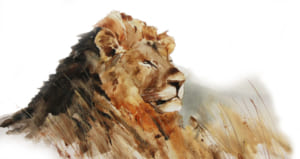
The Enneagram Love Triads
At the 2017 Enneagram Global Summit lectures, Jessica Dibb was chatting to the late Claudio Naranjo in a talk entitled “The Enneagram and Multiplicity.” Naranjo described how we can divide the nine basic Enneagram Types into three triads that reflect these three ways of approaching love: Paternal, Maternal, and Erotic. (A trinity of energies related to active, passive, and reconciling energies.) Writing the book Sex and the Enneagram at the time, I found the concept particularly fascinating.

The Enneagram Love Triads
Because of the nature of the names, they need further definition. “Erotic,” is the only name more typically associated with love. This is more a child-like love of self, where Eros (from where the word erotic derives), is the attractive youth we desire. Motherlove is more other-orientated, while Father Love, Naranjo describes as being “appreciative love.”
Of course, the names used for these approaches to love do not mean that a man can’t demonstrate maternal love, or a woman use a paternal approach—these labels merely describe the kind of energy or approach of these different styles of love, and are not about the actual gender of a person. Ideally, these three types of love would be expressed in equal proportions in the world. But we can see that is not so. The lower side of patriarchal or Father Love rules. Woman’s roles have traditionally been diminished in the home and many religions, while our child-like erotic expression of play and pleasure has been severely repressed and criticized, particularly in the West, where sex has often been viewed as an inconvenient duty.
Demonstrating the Three Love Types in Nature

Painting by Anthony Gadd
Here’s a look at how I experienced these three love types in real life:
I was on safari in the African bush. (It’s an incredibly magical and trans-formative experience to be among these animals.) We were watching a pride of lions not that far from our vehicle. They lazed in the late afternoon sun considering our presence unworthy of any attention. (Which was probably a good thing, given that the vehicle was open with no roof or sides above the waist.) Observing the pride, I was treated to a display of all three love types: A playful cub attempted to engage with his magnificent father—he looked up in awe at the great lion. His father was unimpressed merely growled and dismissed him, showing a distant but protective Paternal love. The cub then started playing with the other cubs in a fun, spontaneous romp (Erotic love) before heading to the reclined lioness. She displayed Maternal love by nurturing him by allowing him to suckle.

Photo: Ann Gadd
Are their countertypes of these loves?
Finally, in mulling over these three Enneagram Love Triads or kinds of love, I became aware of possible counter-types in each of the three groups. It’s a new concept I’m proposing so perhaps some Enneagram students may not agree, but it makes sense to me. Each group revealed one type whose expression of the style of love is different from the other two types. There is an opposite expression of this love.
Note: These “love” counter-types are not to be confused with the Instinctual Drive counterphobic types.

Illustration: Ann Gadd
The Enneagram Love Triads: Maternal Love – Types Two, Four, and Nine
Maternal love is best demonstrated by the love of a mother to a child. This love is unconditional, accepting, and caring (when integrated). You truly feel for the other and carry compassion for their suffering. When a mother’s child is unhappy, most experience their unhappiness deeply and personally. So how does each type “flavor” their love-type?
Type Two
This is the nurturing approach to love used by motherly, helpful Twos. Twos demonstrate this love by always thinking of the other: “What would they most like or what would pleasure them most?” When less integrated it can become seductive to get a lover to comply with their needs.
Type Four
Fours feel intensely, display their love through a desire for a deep connection. They want to express their love, often via creativity. Known as being emotional in their loving expression, as well as being empathetic towards those they care about. Just as mothers can be idealistic about their children, so Fours can at times, be idealistic about a lover.
Type Nine
Their style of love is warm, giving, and unconditional. Naranjo uses the word “altruistic.” Nurturing Nines frequently merge with a partner’s needs. Like a mother, they are accepting of faults and patient with problems. Particularly if they have Eight wings, they will like a mama bear stand up for their offspring as they will do for a lover. “You don’t mess with the people I love!” Like Twos, love becomes all about the other. Nines typically forget themselves in love and need to learn to love themselves.
Maternal love countertype
Type Four: In this group, Twos and Nines move outwards to nurture others, whereas Fours, while they can be very nurturing of others, tend to self-nurture much more. I see them as the countertype because their focus is more on their uniqueness and nurturing that.
The Enneagram Love Triads: Paternal Love – Types One, Five, and Six

Types One, Five, and Six reveal a more removed “North Star” type of love. This is a more detached, yet guiding love. The way a child looks up to his/her father admiringly. The father is protective; an authority figure and someone who you respect (ideally)—a role model. Naranjo uses the word “devotion,” as opposed to compassion. So, this love can be that of a devotee to a spiritual leader, who is the patriarch or “father.” Naranjo suggests it may also include ideas as well as devotion to another.
Type One
Ones have this “North Star” quality in their relationships. They believe they know the right path, which they require you to follow. They have a fatherly, disciplined energy about them, even if they are women. “I know the right way.” It is a cooler, more dutiful, less emotional love.
Type Five

Illustration Type 5: Ann Gadd
Fives, are inclined to observe love rather than engage with others. They watch and fathom, “What is the nature of love? Do I feel it? What is it to feel? What can I notice about others in love?” Love can become a problem or puzzle to be solved. Fives want to be authority figures, guiding you on the path to love. They can be inclined to think love, rather than feel it. This may be why it’s fairly common for Fives to have long-distance relationships. From across an ocean or state, the paternal love transpires.
Type Six
Sixes can desire to be an authority figure as with the other two types, or they may be attracted to an authority figure, particularly when it comes to religion or ideological thinking. Authority figures help them feel more secure: “If I’m part of this group, I’ll be safe.” Love is grounded in trust, loyalty, logic, and the practicalities of day-to-day living. As much as they can overcome their fear, or rather act despite it to be heroes, they also seek heroes to admire.
Paternal love countertype
Type Six: Here, Ones and Fives seek to be authority figures, whereas Sixes can seek an authority figure, rather than necessarily need to be one.
The Enneagram Love Triads: Erotic or Childlike Love – Types Three, Seven, and Eight
These three types have a self-focused, child-like approach to love. They want to be the central focus in the relationship. Eros is usually depicted in Greek mythology as a carefree and beautiful youth. In Roman mythology, Cupid, the Eros equivalent, is depicted as being younger. This speaks to the more childlike or innocent love of self and our instinctual self. Three’s attractiveness, either in looks or charisma, has us wanting to gravitate towards them; to be caught up in their magical charm.
Type Seven
Sevens have an exuberant, joyful, playful approach to life and love. Like children, they are spontaneous in their love. They draw people towards them with their fun-loving, carefree enthusiasm. A buzz of excitement surrounds them. As with the other two Erotic types, they display a confident approach. Confidence is always a great aphrodisiac. Their desire for new possibilities (all be they possibly risqué) adds to their attraction.
Type Eight
Eights can be demanding lovers. With their Enneagram Passion of lust, they go after what they want, ignoring any barriers they may confront. They need to be the central focus in the relationship. Confident, swaggering, with an attractive brusqueness to their approach. They simply can’t and won’t be ignored.
Type Three
To be admired and adored, Threes want to shine. “Look at me. See all that I have achieved.” Because they desire recognition, their focus has to shift to themselves to create desirability. As a lover, you are drawn to their success and charisma like a moth to a beautiful flame. Imagine, for example, the famous singer or actor enjoying the attention of admirers at a social event or in their Instagram following.
Erotic or Childlike love countertype
Type Eight. In this group, Sevens and Threes want admiration from others, but Eights are self-admiring. They don’t care if you like them or not. I see them then as the Erotic countertype—they go against the need for others’ admiration.
As always, grateful thanks to all my teachers, in particular Claudio Naranjo from whose insights I was able to propose this concept of counter love types.
Ann Gadd is the author of Sex and the Enneagram, The Enneagram of Eating and the Enneagram Children’s series. (Percy Perfect, Hazel Helper, Sally Star, Arthur Artsy etc.)

